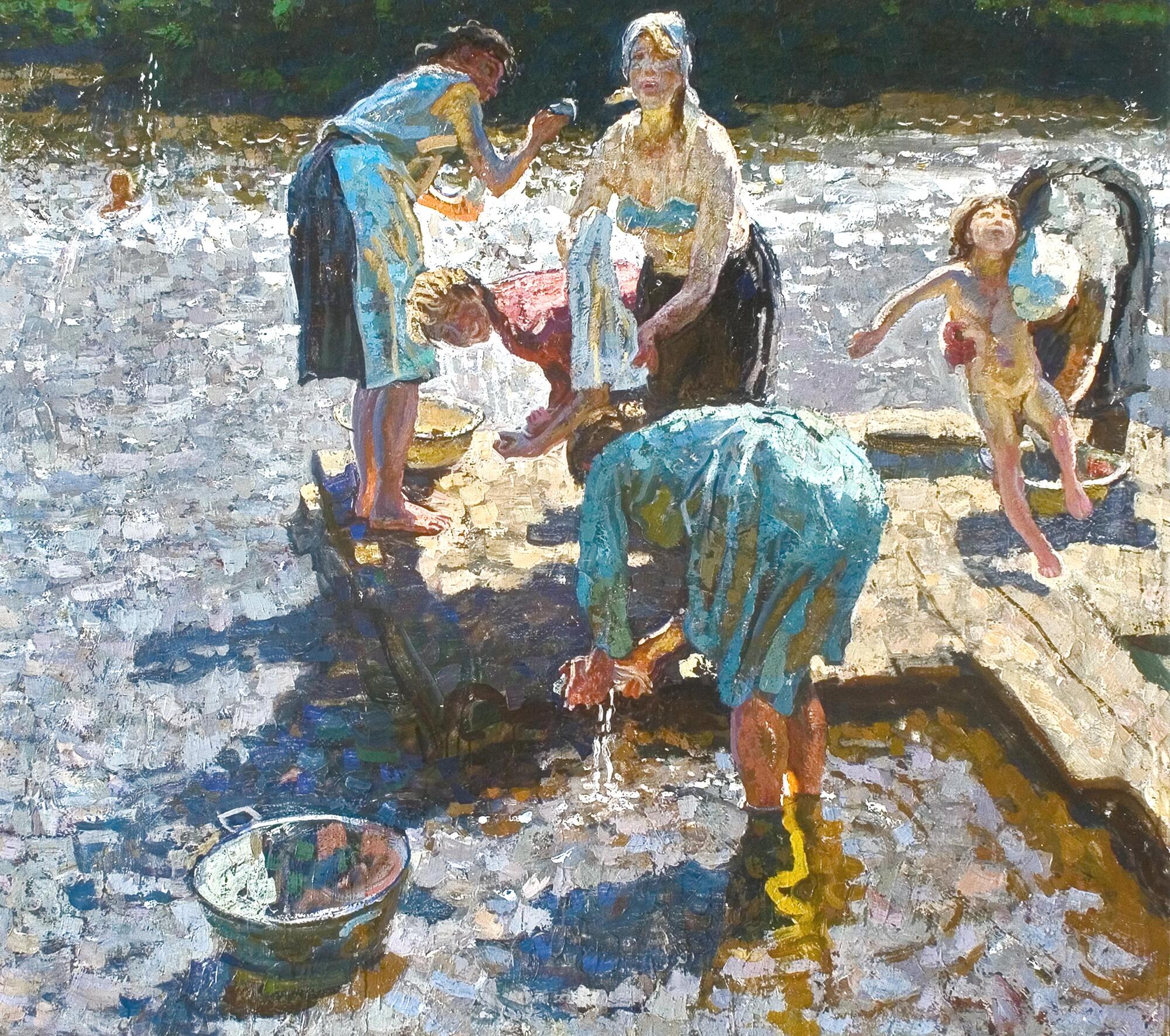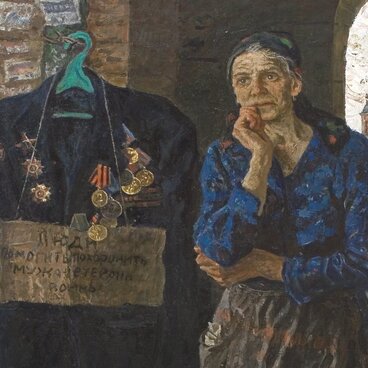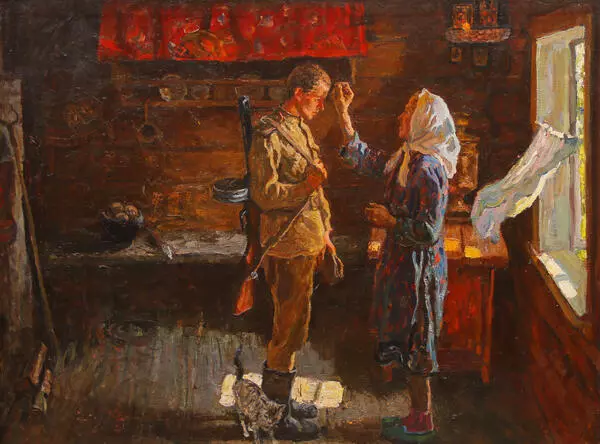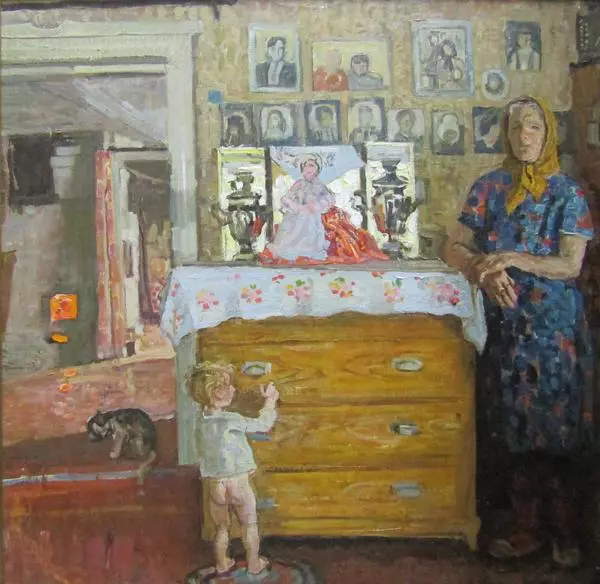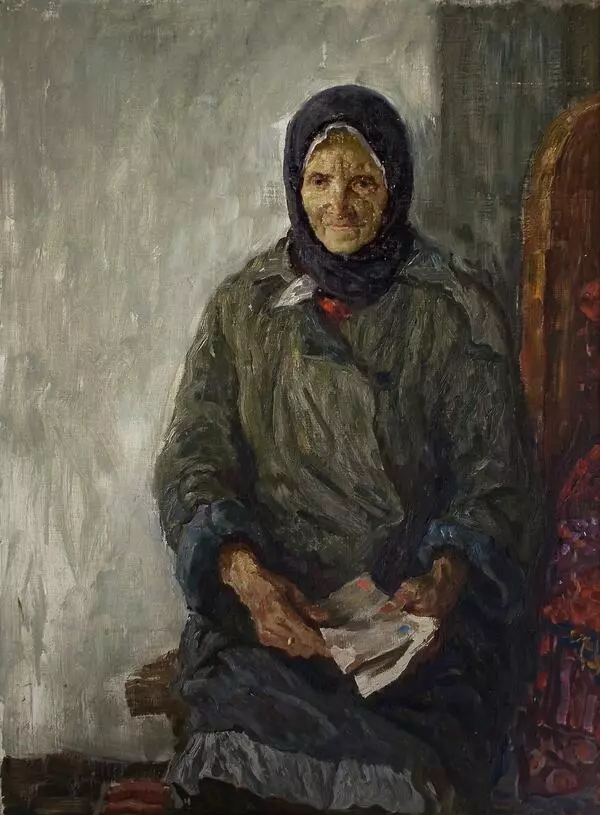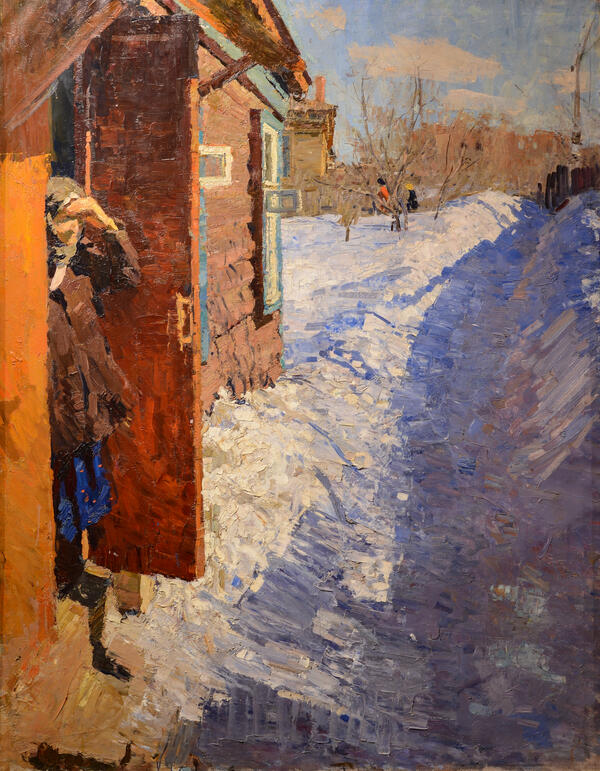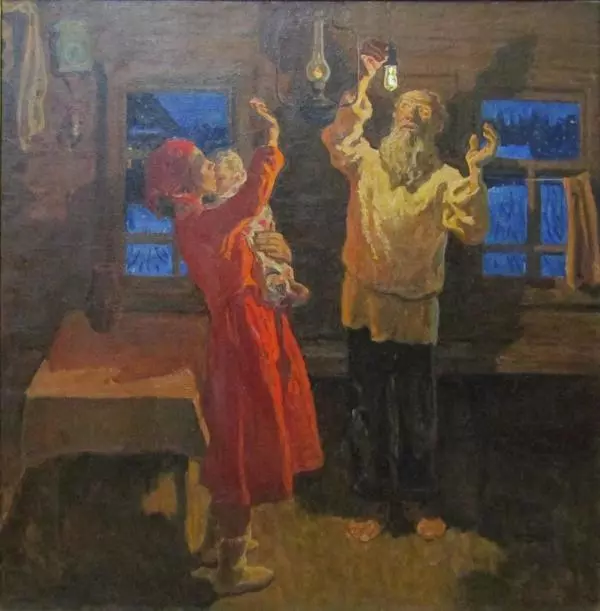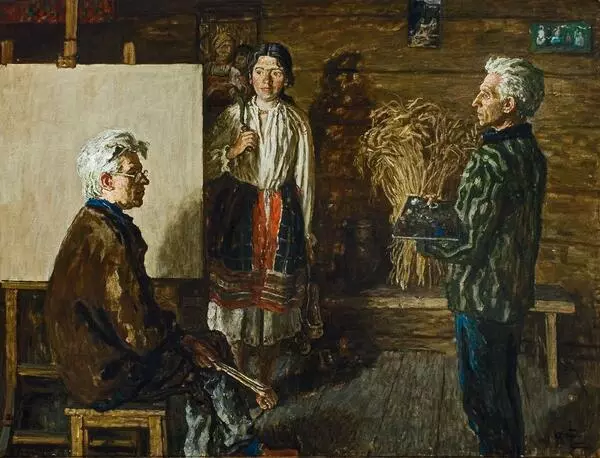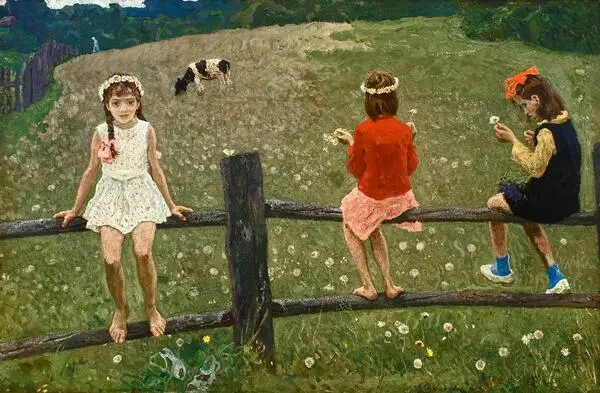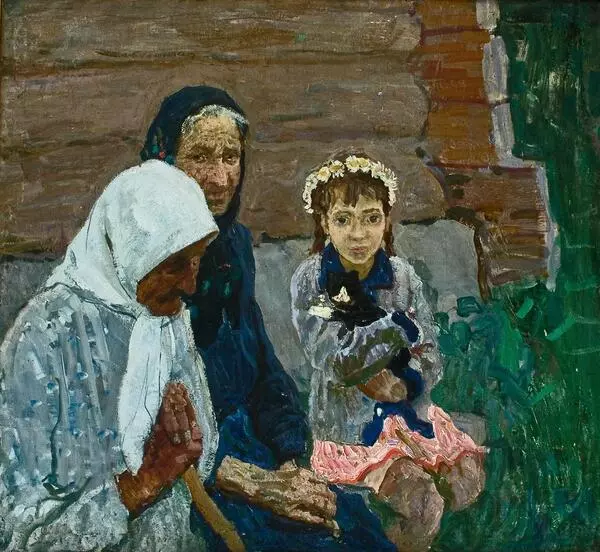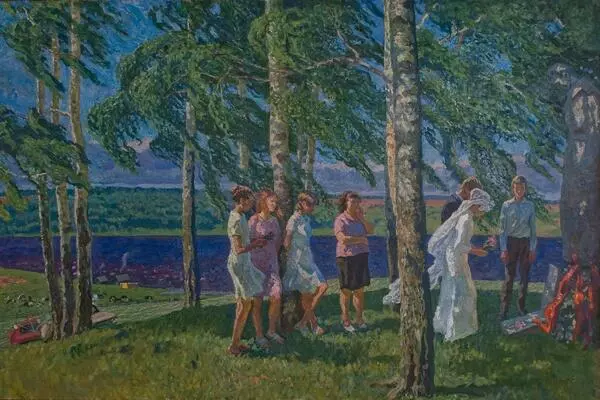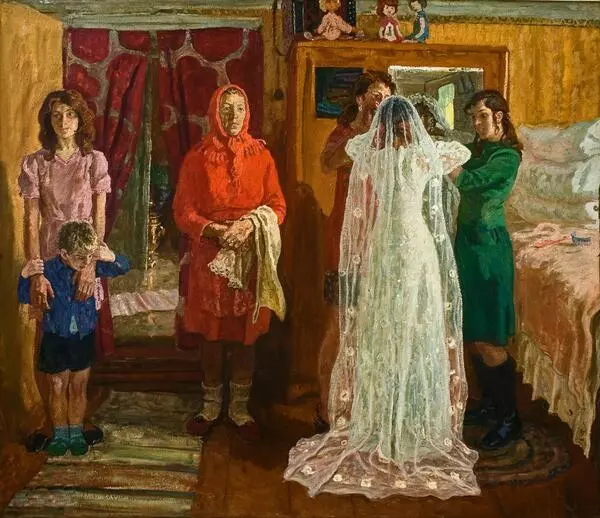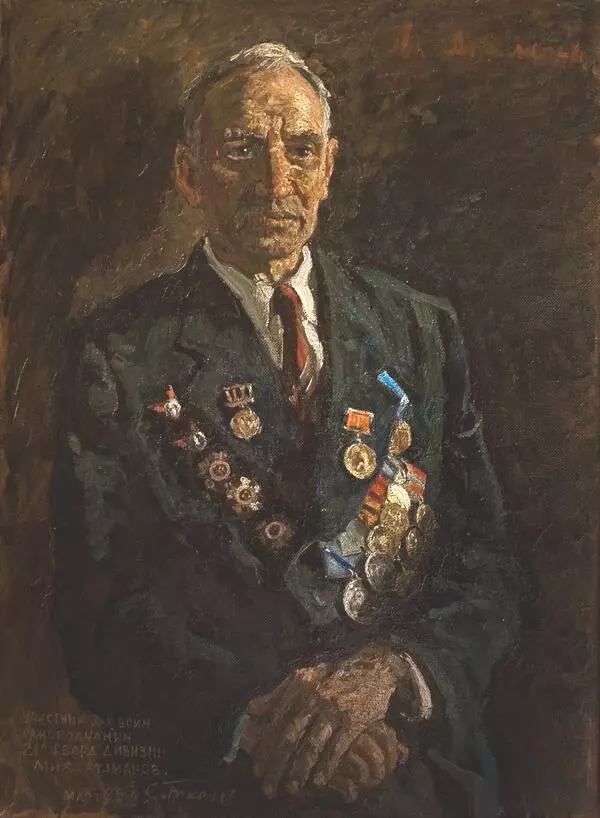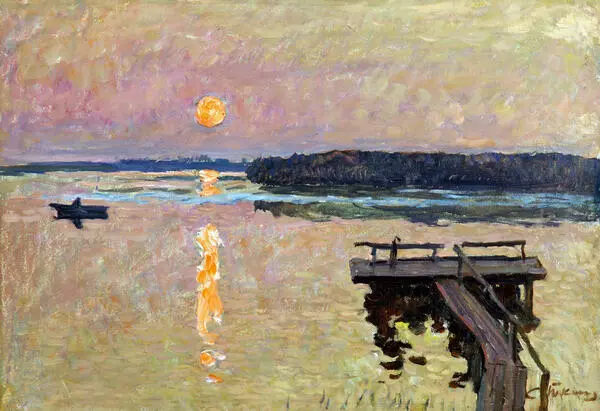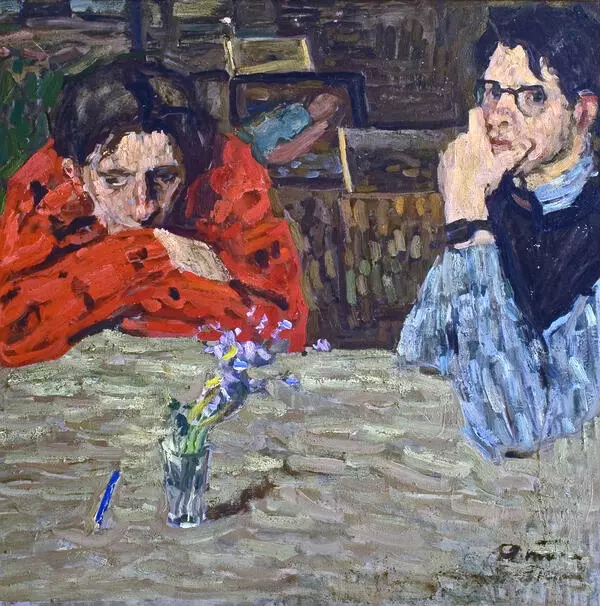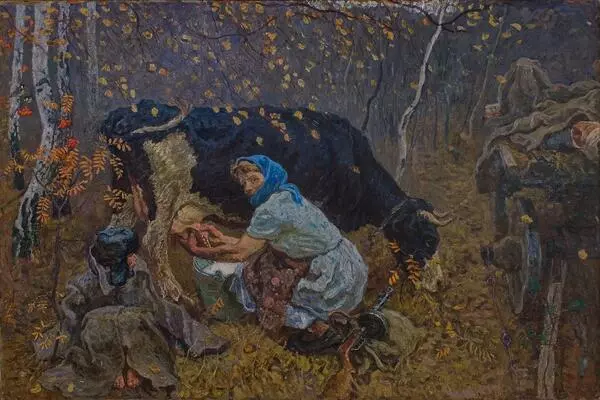Sergei and Alexei Tkachyov finished ‘Washerwomen’ in 1990. They saw the paintings subject in Podolsk, near Moscow, by the Pakhra river in the mid-1950s. The brothers jotted down the scene in a small notebook and later created several versions of the painting based on this description.
In the 1990 version, the artists depict a group of five women standing on decking by the water. Four of them are rinsing clothes, whilst the fifth is bathing a baby. Art historian Vitaliy Manin said the following about the brothers’ choice of theme for this work: “The artists” field of interests is based around the lives of ordinary people. Intriguing events don’t make their way onto their canvases, rather everyday working life. The theme of ‘Washerwomen’ is a directly contrasted with ‘the heroic daily routine’.
The washerwomen are bathed in the rays of the bright summer sun, with the light shimmering on the water’s surface and making sparks in the flying spray. The colorful and contrasting painting style emphasizes the women’s joyful mood. The artists are not afraid to use shades of ochre for the shadows on the blue dress, paint colorful reflections onto the water’s surface or add blue and yellow reflexes to the subjects. Reflections of objects in other objects are called reflexes. They are easy to spot when, for example, the yellow pelvis is close to the white apron — yellow highlights appear on the apron, whilst the white fabric is slightly reflected on the pelvis.
The painting is imbued with a sense of freedom through the energetic brush strokes. In some places the brothers used short brush strokes, in others they used longer lines. Artists use similar techniques when painting outdoors, or “en plein air” as they say in French. The outdoor painting approach involves painting in one session in natural light. Usually the artists will try to portray the smallest shifts of light, the flutters of the air and the fluidity of shadows. In these paintings the individual brush strokes are clearly visible. The Tkachyov brothers brought a sense of the plein-air approach to their studio. Art historian Vladimir Sysoev has noted that Sergei and Alexei’s craft continues the Russian painting tradition is closely linked with the work of Ilya Repin, Isaac Levitan, Vasily Perov and Konstantin Korovin.
In the 1990 version, the artists depict a group of five women standing on decking by the water. Four of them are rinsing clothes, whilst the fifth is bathing a baby. Art historian Vitaliy Manin said the following about the brothers’ choice of theme for this work: “The artists” field of interests is based around the lives of ordinary people. Intriguing events don’t make their way onto their canvases, rather everyday working life. The theme of ‘Washerwomen’ is a directly contrasted with ‘the heroic daily routine’.
The washerwomen are bathed in the rays of the bright summer sun, with the light shimmering on the water’s surface and making sparks in the flying spray. The colorful and contrasting painting style emphasizes the women’s joyful mood. The artists are not afraid to use shades of ochre for the shadows on the blue dress, paint colorful reflections onto the water’s surface or add blue and yellow reflexes to the subjects. Reflections of objects in other objects are called reflexes. They are easy to spot when, for example, the yellow pelvis is close to the white apron — yellow highlights appear on the apron, whilst the white fabric is slightly reflected on the pelvis.
The painting is imbued with a sense of freedom through the energetic brush strokes. In some places the brothers used short brush strokes, in others they used longer lines. Artists use similar techniques when painting outdoors, or “en plein air” as they say in French. The outdoor painting approach involves painting in one session in natural light. Usually the artists will try to portray the smallest shifts of light, the flutters of the air and the fluidity of shadows. In these paintings the individual brush strokes are clearly visible. The Tkachyov brothers brought a sense of the plein-air approach to their studio. Art historian Vladimir Sysoev has noted that Sergei and Alexei’s craft continues the Russian painting tradition is closely linked with the work of Ilya Repin, Isaac Levitan, Vasily Perov and Konstantin Korovin.
